Introduction
Welcome to our exploration of Agave tequilana, the legend behind the liquor. This isn’t just any plant, it’s the star ingredient in tequila, and it has a tale as fascinating as the drink itself. In this article, you’ll learn about the history, significance, and secrets of Agave tequilana, from its roots (pun intended) to its role in modern mixology.
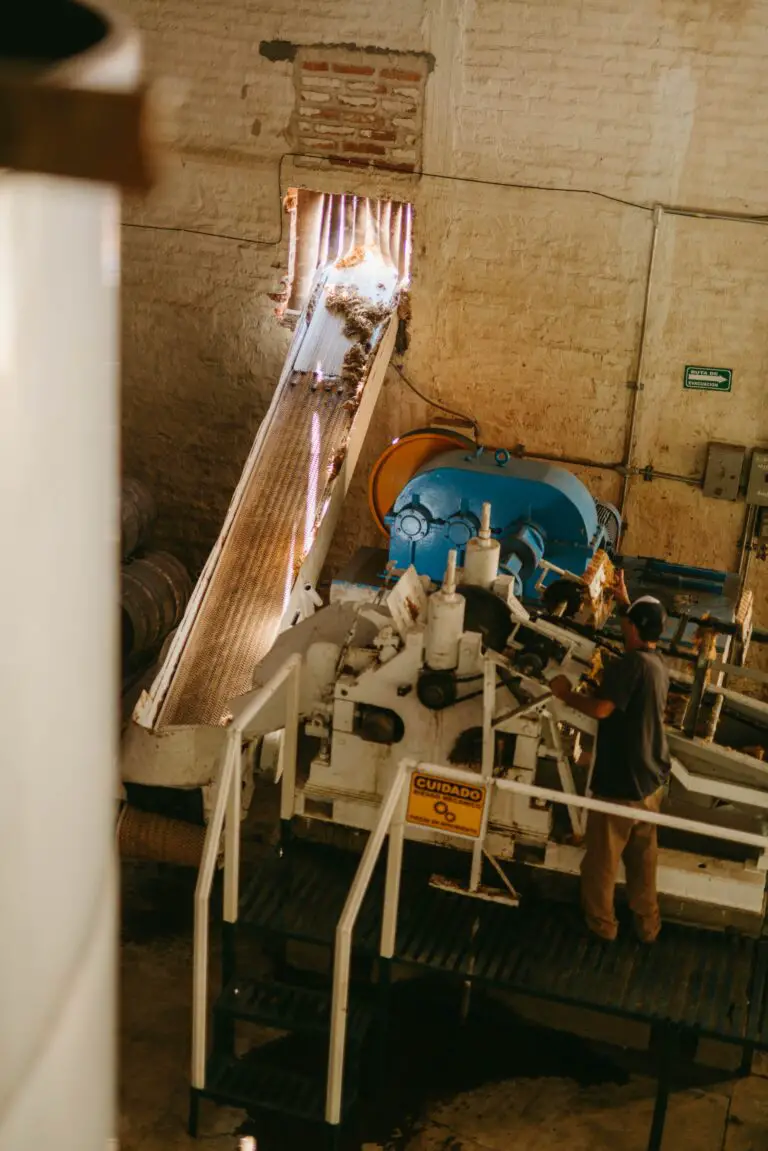
The majestic Agave tequilana, also known as the blue agave, isn’t just popular in your margarita. This succulent plant hails from the arid regions of Mexico and has been an essential part of human history in these areas for centuries. Its sap has been fermented to create pulque, a traditional Mexican drink, long before tequila captured the global stage. And today? It finds itself in one of the world’s most celebrated spirits, giving pleasure to many a cocktail enthusiast.
But why is it significant? Well, tequila couldn’t exist without it. The Agave tequilana is the key, the secret, the magic, behind this world-famous liquor. It provides not only flavor but also culture, history, and a connection to a more ancient world.
Understanding the Agave tequilana also provides a window into the relationship between humans and the natural world, and how we’ve harnessed the powers of plants for our own uses. The story of agave shows how we’ve moved from simple survival uses to more complex cultural creations like tequila.
In this article, we’ll delve into the origins of Agave tequilana, how it’s grown and processed, and, of course, how it comes to be a crucial part of the tequila you love. Ready for a journey not just through the drink but also through time? Let’s go.
Discovering Agave Tequilana
Have you heard of Agave Tequilana? It’s the stuff of legends in the liquor world, a remarkable plant that’s kick-started countless parties and celebrations. But what exactly is Agave Tequilana? Grab a margarita, or maybe a shot of tequila, and let’s dive right in.
Officially called Agave tequilana, it goes by several names you might recognize: blue agave, tequila agave, or simply tequila plant. Its direct relation to your favorite spirited beverages might be obvious now.
Did you know agave is part of the Asparagaceae family? Don’t let this tongue-twister scare you off. It’s the same botanical family as the asparagus we regularly nosh on, although I wouldn’t replace my side of grilled asparagus with a shot of tequila just yet!
Agave tequilana has a unique growth habit that sets it apart from most plants. Unlike annuals or perennials, it’s a semelparous plant, meaning it dies shortly after it blooms. After growing for 5-7 years, the agave plant sends out a tall flowering stalk, blooms magnificently, and then ceases to exist. Not unlike a fiery finale, wouldn’t you say?
Physical characteristics of the agave are striking, with its large rosette of thick, fleshy leaves radiating out from the center. The leaves end in sharp points, almost reminiscent of the mythical creatures they’re sometimes named after: dragons.
Where does the Agave tequilana naturally call home? It’s a native of Jalisco, Mexico. Picture this: Large plantations sprawled across the jalisco landscape, with rows upon rows of the Agave tequilana. The sheer sight is enough to take your breath away.
Understandably, with such a captivating plant, it’s hard not to be allured by the legend and lore that surround it. The mouth-watering concoctions this hardy plant produces only add to its charm. It’s like finding an oasis in the arid, weather-worn habitats where it thrives.
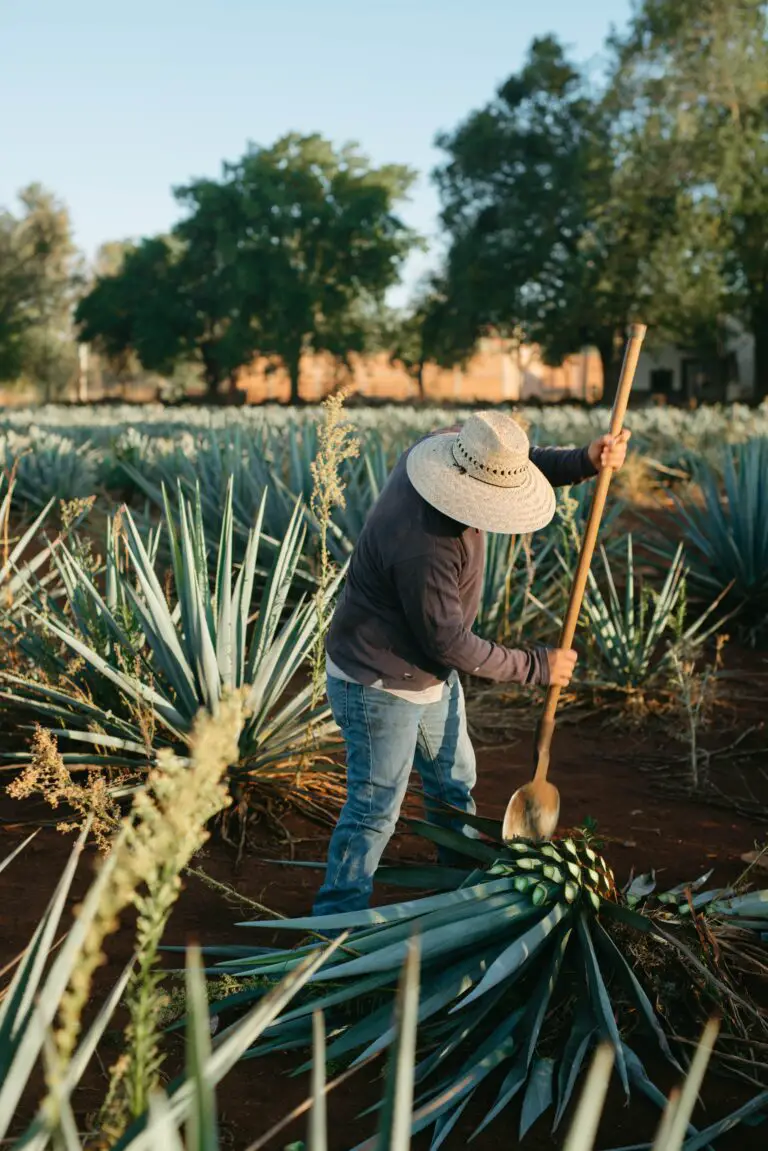
Agave Tequilana: The Birthplace of Tequila
When you think of tequila, what comes to mind? Fiery shots at a bar, perhaps, or maybe a tart margarita on a hot summer day? What many people don’t realize is that this popular liquor has its roots firmly planted in the Mexican soil, and it all begins with a plant – the Agave tequilana.
Much like grapes to wine, the Agave tequilana — lovingly referred to as blue agave — is the critical ingredient in creating the robust flavor profile that tequila admirers world-wide have come to love. Tequila isn’t just about the taste, either. There’s an art to making this distinct liquor, and it’s protected by legal regulations to ensure its cultural significance and quality are preserved.

Process of Tequila Making
Creating tequila is a labor of love—it requires patience and attention to detail. It starts with the Agave tequilana, which isn’t harvested until it’s between 8 to 12 years old. At peak maturity, the leaves of the plant are removed, revealing the piña or heart, which is loaded with sugar juice which ferments into alcohol.
The piñas are then cooked in ovens to transform the complex fructans into simple fructose (sugar), which is vital for fermentation. Once cooked, these piñas are crushed to extract the juice, which is then fermented and finally distilled to get the tequila.
Legal Parameters
Tequila is more than just liquor—it’s a cultural heritage. As such, its production is protected by Denomination of Origin (DO) status, much like Champagne in France. This means that for a distilled beverage to be marketed as tequila, it must originate from a specified region—in this case, select regions in Mexico—and must be made according to specific methods.
Mexican laws state that tequila can only be made from the Weber Blue variety of Agave tequilana and must contain no less than 51% agave sugars. Any bottle of tequila you buy will either be 100% agave, or a mix that contains no less than 51% agave—the remaining can come from other sugar sources.
Cultural Significance
Tequila has shaped Mexican culture for centuries. It originated in the city of Tequila, located in the state of Jalisco, Mexico. This region offers the perfect soil and climate conditions for the Agave tequilana to thrive.
In Mexico, tequila isn’t merely a drink—it’s a symbol of national pride and cultural identity. Whether part of a celebration, a relaxing evening, or incorporated into cooking, tequila is deeply ingrained in Mexican life. Its popularity worldwide is just the icing on the cake—or rather, the salt on the rim of the glass!
Health Consequences of Agave Tequilana
When discussing Agave tequilana, it’s impossible to ignore the intriguing health implications of this remarkable plant. Frequently mistaken as a menacing cactus, it’s actually a succulent that offers a healthy elixir famously known as tequila. The agave juice, also transformed into agave nectar, has carved a niche in the health community, inciting numerous debates on its benefits and drawbacks.
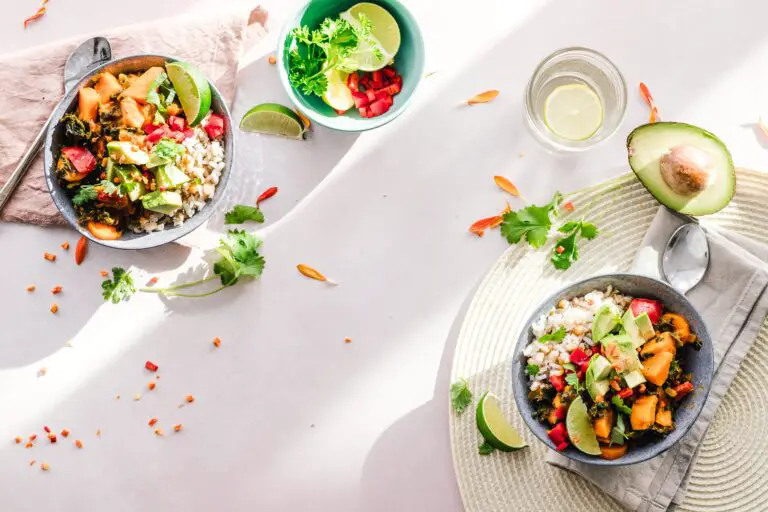
The Upside of Agave
Agave tequilana, apart from gracing us with tequila, gifts us the blessing of agave nectar. Noted for its low glycemic index, agave nectar is a preferred sweetener for people with diabetes. The low glycemic index means it won’t spike your blood sugar levels as high or as quickly as other sweeteners like table sugar or honey. This can help control appetite and maintain weight, ultimately beneficial for overall health.
Tequila’s Health Twist
Now, let’s turn our attention to the star of the show, tequila. A shot of tequila after dinner has been cited as beneficial to digestion. And surprisingly enough, tequila is gluten-free, making it a go-to for those with gluten intolerance. But before we raise our glasses, it’s important to explore the health consequences of Agave tequilana further.
The Catch
Although there’s a lot to love about Agave tequilana’s offerings, it’s necessary to approach with caution. Yes, agave nectar has a low glycemic index, but it’s high in fructose content which can be a roadblock if you’re trying to lose weight. Similarly, tequila, like all alcoholic beverages, should be consumed in moderation. While it does have benefits, excessive consumption can lead to negative health consequences, such as liver damage.
In conclusion, consuming Agave tequilana-derived products like tequila and agave nectar can have potential health benefits when done responsibly. They can add a sweet twist to your meals, and hey, a shot might even aid digestion. However, remember to enjoy these treats in moderation to welcome their benefits while minimizing their drawbacks.
Economical Impact of Agave Tequilana
It’s quite fascinating to delve into the economics of Agave tequilana – an crucial plant species that fuels multiple global industries. Have you ever pondered how one humble plant can influence the trajectory of entire local communities, industries, and even the global economic structure? Well, let’s dive right into it.
The Agave tequilana, also often dubbed the ‘blue agave’, is primarily celebrated as the pivotal ingredient in a globally-loved liquor – tequila. But, this plant is not just about party shots and margaritas. No sir! It brings immense economic value to the table.

Situated across arid regions of the Americas, Agave tequilana cultivation is a major source of income and employment in these locales. An interesting manifestation of this comes from the robust tequila industry. You might be stunned to discover that in 2021 alone, tequila production witnessed an increase of 10% – and staggering 60% for Tequila 100% agave! This influx cascaded into a record-breaking production of 527.1 million liters. Our humble Agave tequilana is indeed a superstar.
But it’s not all sunshine and rainbows. The economics of Agave tequilana also tell a story of volatility. As an instance, agave prices rocketed from just 3 pesos per kilo to 22 pesos per kilo within a short span of 5 years. Such fluctuations periodically ruffle the markets, leading to uncertainties.
Yet, notwithstanding these price gyrations, Agave tequilana continues to bolster the economic strength of the industries it’s intertwined with, sparking progress in national and international markets. This plant continues to inspire, generate revenue, and shape economies, far beyond what one might expect at first glance. Isn’t it amazing how the story of Agave tequilana’s economic impact, once unravelled, turns out to be so riveting?
Conservation Status and Sustainability Issues
As you delve deeper into the world of Agave tequilana, a picture that is both fascinating and somewhat alarming starts to develop. This incredible plant, the very soul of tequila, is facing some serious environmental pressures.
Think about it, every time you enjoy a tangy margarita or a smooth shot of tequila, you’re partaking in the consumption of a species that’s under threat. The factors pressuring the existence of Agave tequilana are complex and multi-layered, from local farming practices to global climate trends.
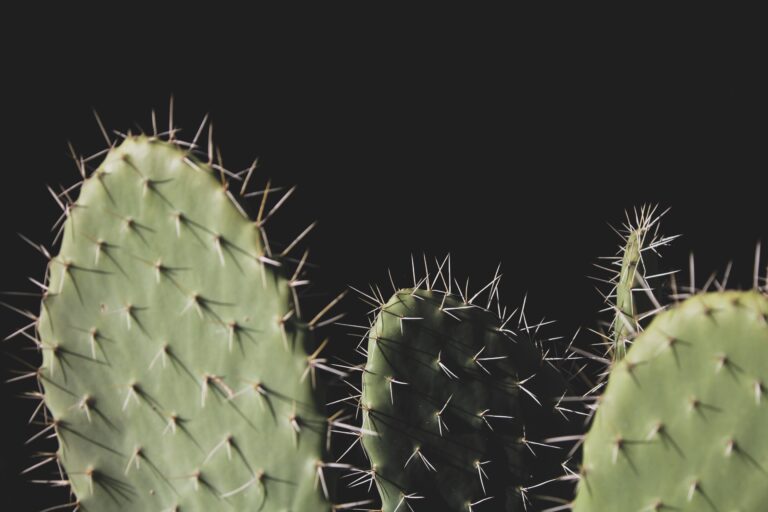
Many people are oblivious to the fact that Agave tequilana is a monoculture crop, meaning, vast plots of land are dedicated solely for its cultivation, leading to biodiversity loss. In other words, this horizontal green ocean of agave plants replacing the natural flora might not be as green as it appears.
The Threat Spectrum
A significant threat to Agave tequilana is the pests and diseases that decimate entire fields in a surprisingly short time. This risk is exacerbated by the genetic uniformity due to cloning techniques adopted in the plant’s cultivation, which diminishes the ability of the crop to resist these pests or diseases.
Moreover, the intensive cultivation practices and the use of synthetic fertilizers and pesticides have far-reaching impacts on local water resources and soil health, contributing to the sustainability problem.
Eco-friendly Alternatives
While it’s clear that the cultivation of Agave tequilana needs to become more sustainable, thankfully, a few potential solutions are coalescing on the horizon. Some distilleries are now attempting to cultivate organic agave without the use of synthetic fertilizers or pesticides. Also, agave producers are exploring more sustainable farming methods, like polyculture (mixing different crops on one piece of land), drastically reducing the environmental impact.
So, in essence, Agave tequilana, the heart of tequila, faces considerable sustainability and conservation challenges. But with changing attitudes and innovative farming techniques, there’s hope that we can continue to enjoy this vibrant spirit without leaving a burdensome footprint on our planet.
How to Grow and Care for Agave Tequilana
Let’s pivot to something a lot of us are passionate about: cultivating our own plants, specifically our superstar of the day, the Agave tequilana. Yes, that’s right! This legendary plant is not only the backbone of our beloved tequila but also a fantastic addition to your home or garden.
Imagine this: a sunny Saturday afternoon, you’re out in your garden, the world seems calm and peaceful, and right there in front of you, amidst your array of flora, is your very own Agave tequilana. It’s not just about the aesthetic appeal (which, by the way, is off the charts!). Growing this plant also whispers a story of culture, history, and an age-old liquor-making process!
So, how do you turn this scenarios into reality? Let’s get to it!
Optimal Soil Conditions
The Agave tequilana thrives best in sandy or rocky soils with excellent drainage. If you’re in doubt about the soil choice, think about its native habitat – arid regions in Mexico. Emulating these conditions should set the stage for a healthy plant.
Climate Needs
Agave tequilana is a sun-lover. It adores bright, direct light, and warm temperatures. However, it can tolerate mild frost. Just remember to protect this sun-kissed beauty from heavy rain and frosty winter conditions as those could be detrimental.
Common Problems and Solutions
Like any plant, Agave tequilana can have its share of problems too. Pests, particularly Agave snout weevils, can pose threats. They burrow into plants causing destruction from the inside out. Keep an eye out for rot, too. If your plant’s base becomes mushy or discolored, it might be a sign of overwatering.
The solution? Regular surveillance and maintaining a suitable environment is crucial. Detect problems early on, and provide proper care to keep your Agave tequilana happy.
Now, are you ready for some hands-on? Here’s an excellent video guide on how to grow Agave tequilana at home:
There you go! A comprehensive guide on how to grow and care for your Agave tequilana. Remember, patience is key as these plants grow slowly. But in the end, witnessing your Agave tequilana thrive will be worth the wait.
Frequently Asked Questions
Tequila. Just the mention of it probably brings up rich memories of celebrations, parties, and delicious cocktails. But have you ever wondered about the plant that plays an instrumental role in creating this beloved beverage? Yes, we’re talking about Agave tequilana, often known as blue agave. So let’s dive into some frequently asked questions about this fascinating plant.
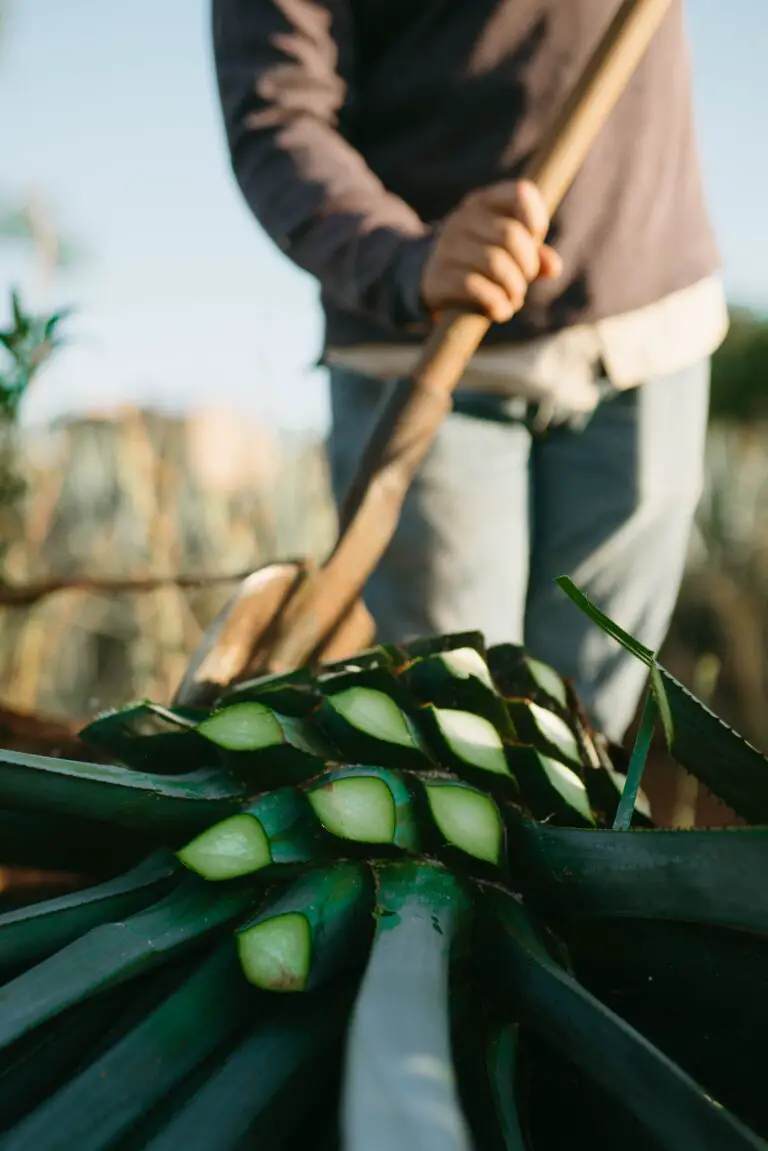
How is Agave tequilana related to other agave species?
Agave tequilana is a member of the Asparagaceae family and is one of over 200 species within the agave genus. While each species has unique characteristics, Agave tequilana, specifically the blue agave variety, is the primary species used for tequila production, setting it apart from its cousins.
What is the difference between Blue Agave and common agave?
Not all agave plants are created equal, especially when we’re talking tequila. Agave tequilana ‘Weber’s Blue’, commonly known merely as blue agave, is the superstar here. It’s larger and sturdier than most other agave types, with a high sugar content in its core, known as the ‘piña’, where all the magical stuff for tequila happens.
On the other hand, common agave, like the maguey (Agave americana), while also used in drink production such as for pulque, lacks the specific qualities that make blue agave so suited for tequila. So, remember, if you’re looking for a tequila experience, you’re looking for a product made from blue agave.
How to consume tequila in a healthy way?
When enjoyed responsibly, tequila can be a part of a healthy lifestyle. In fact, it comes with some surprising health benefits. Agave tequilana is rich in inulin, a type of prebiotic fiber that can help digestive health. Plus, tequila has less sugar and fewer calories than many other alcoholic drinks. Rule of thumb – moderation is the key. Sipping rather than shooting and avoiding high-calorie mixers are smart ways to enjoy tequila without overdoing it.
Hopefully, this has answered some common questions about Agave tequilana, the liquor legend. But remember, there’s always more to learn, so never stop asking!



